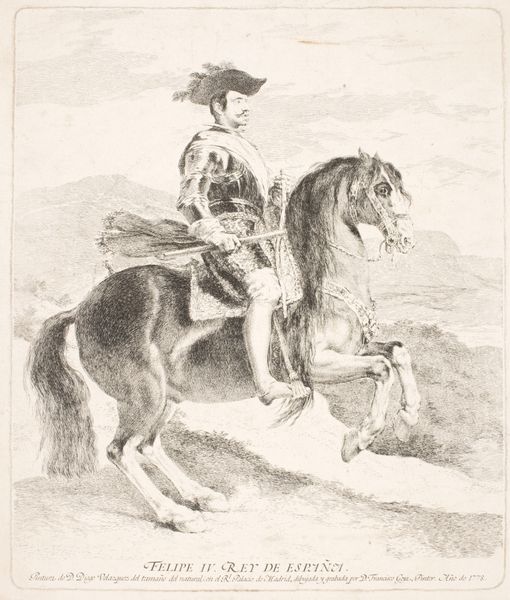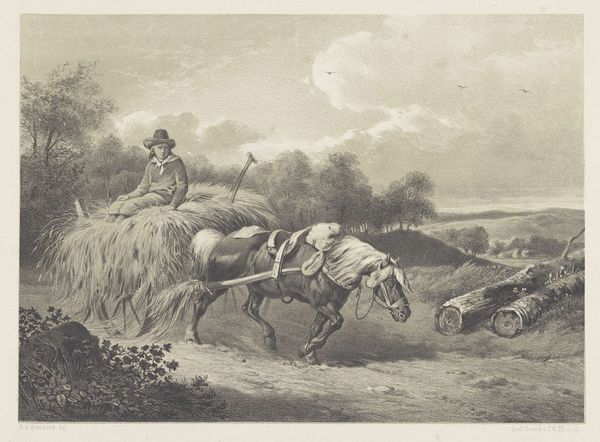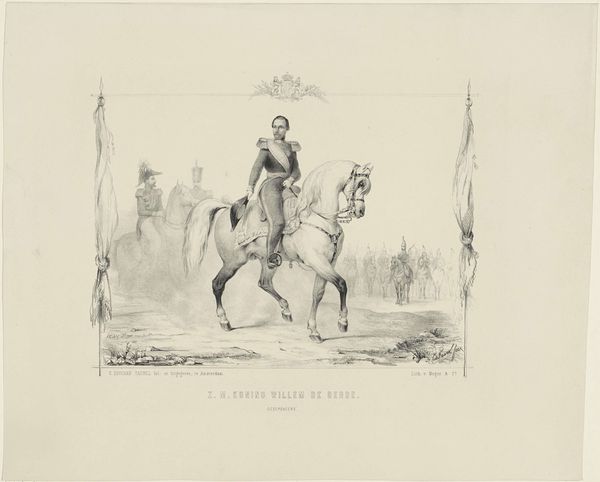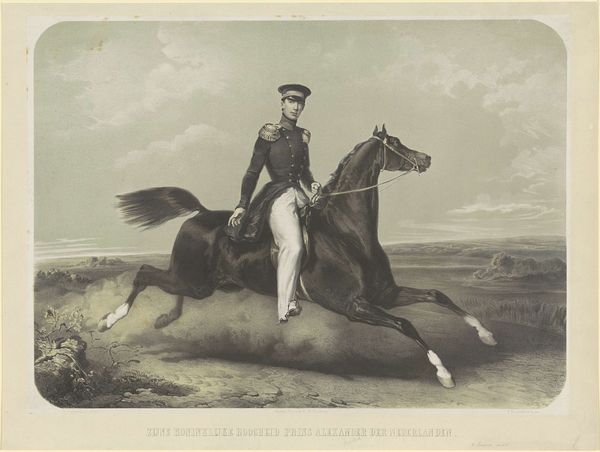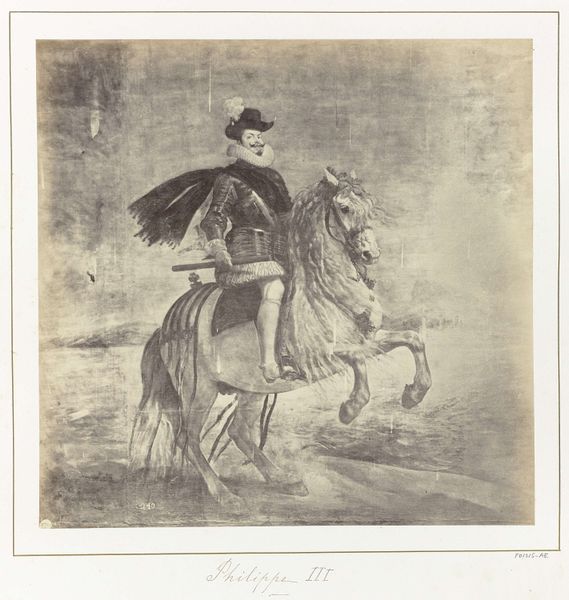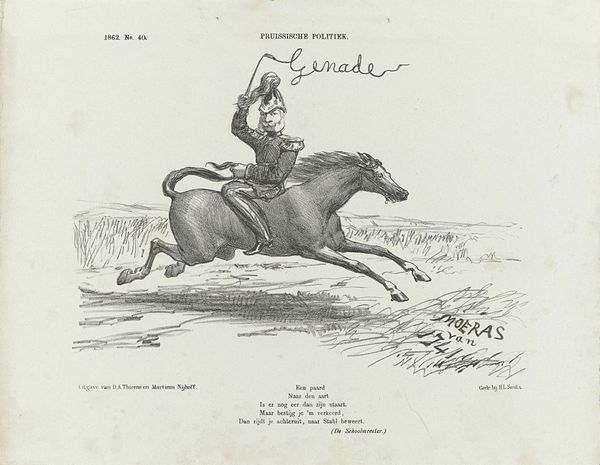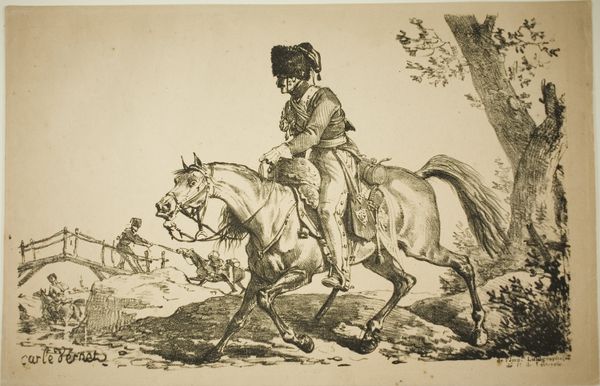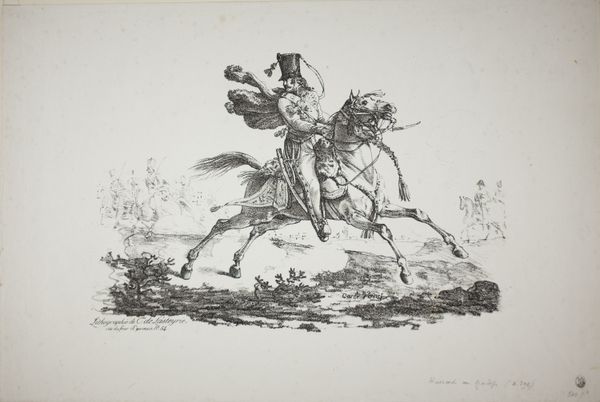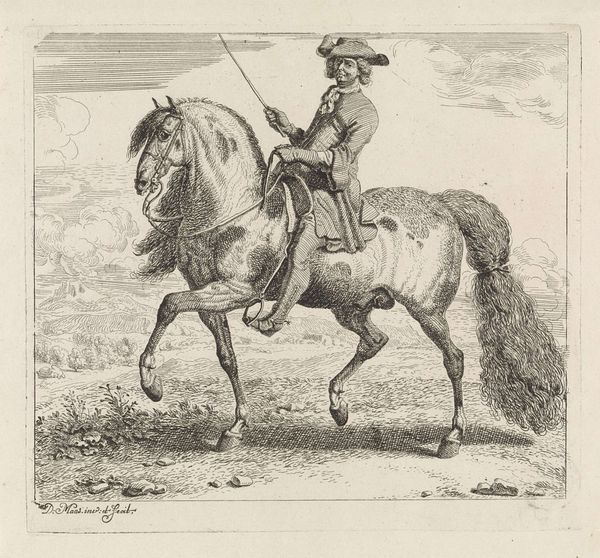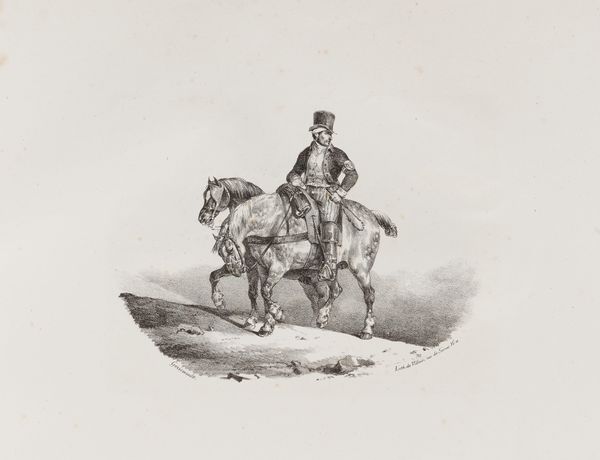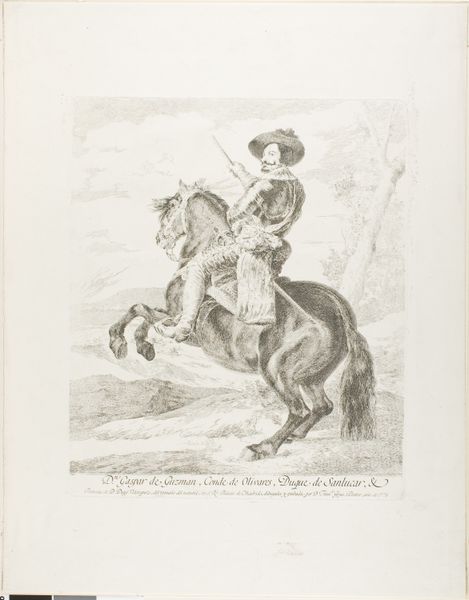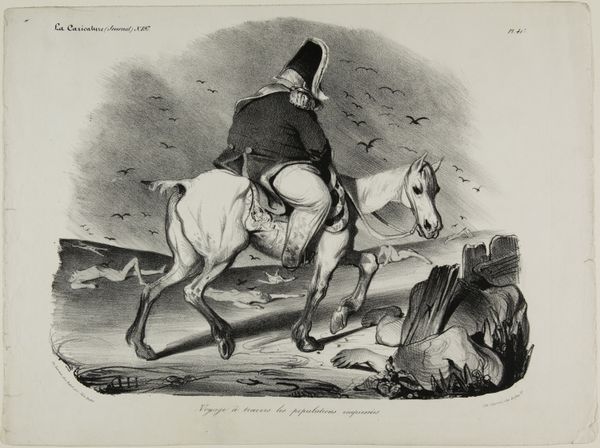
drawing, pencil, graphite
#
portrait
#
pencil drawn
#
drawing
#
landscape
#
charcoal drawing
#
pencil drawing
#
pencil
#
graphite
#
history-painting
#
academic-art
#
graphite
#
realism
Dimensions: height 265 mm, width 267 mm
Copyright: Rijks Museum: Open Domain
Curator: What strikes me about this portrait, beyond the depicted opulence, is the drawing itself. Editor: So, this is "Equestrian Portrait of Alexander I, Prince of the Netherlands" by Charles Rochussen, sometime between 1835 and 1894. It’s graphite and pencil on paper and, honestly, quite impressive. It has an almost photographic clarity but you're focused on the "drawing itself." Could you elaborate? Curator: Consider the economic landscape when this drawing was likely produced. Graphite and pencil were increasingly available but still valuable commodities. Rochussen, by using these relatively accessible materials to depict Prince Alexander, engages in a fascinating dialogue about representation and access. Editor: Interesting... the contrast between the noble subject matter and what was quickly becoming commercial material. Is this something Rochussen was known for? Curator: We see here the academic art tradition merging with an emerging consumer culture. What was Rochussen saying about the subject's power through the choice of readily accessible material? Or maybe how art production democratizes by enabling new production of an aristocrat's image for burgeoning public consumption? What effect does this potentially have on the consumption of art and the aristocracy? Editor: It kind of flips the idea of who art is for, right? It’s not just for the wealthy elite anymore, but a product that could, conceivably, be disseminated more widely. It changes the value and perception of both the image and the man. Curator: Precisely. It encourages us to consider not just what is depicted but how it's depicted, and what that reveals about the social and economic currents of the time. The artist uses material choices to subtly challenge traditional hierarchies. Editor: I hadn’t considered the material having so much to say about power dynamics! It really shifts the focus of how to look at and understand the work. Curator: Indeed. By examining the material conditions of art production, we uncover deeper layers of meaning and engage with the complex interplay between art, labor, and society.
Comments
No comments
Be the first to comment and join the conversation on the ultimate creative platform.

